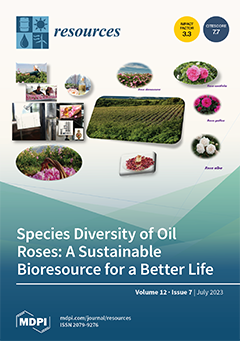Low concentrations of fluoride (F
−) in drinking water are beneficial for oral health, but the natural occurrence of high F
− content has been reported in various groundwater sources, posing a continuous ingestion threat to humans. The utilization of biochar (BC)
[...] Read more.
Low concentrations of fluoride (F
−) in drinking water are beneficial for oral health, but the natural occurrence of high F
− content has been reported in various groundwater sources, posing a continuous ingestion threat to humans. The utilization of biochar (BC) produced from residual biomass has emerged as a technically, economically, and environmentally sustainable alternative for fluoride removal through adsorption. Therefore, this study aimed to investigate the physicochemical characteristics of BC derived from coffee grounds and the influence of various factors on the adsorption process of F
− in aqueous media, including pH, adsorbent dosage, contact time, temperature, and initial F
− concentration. The BC exhibited a surface area of 12.94 m
2·g
−1 and a pore volume of 0.0349 cm
3·g
−1. The adsorption process was strongly pH dependent, demonstrating a significant decline in performance as pH increased from 2.0 onwards. The majority of F
− removal occurred within the first 5 min, reaching adsorption equilibrium after 1 h of testing, regardless of the initial F
− concentration employed. The data fitting to the Webber–Morris model indicated a two-step adsorption process on BC, with the first step being external surface sorption and the second step being intra-articular diffusion. The process was determined to be endergonic, and the data satisfactorily matched both the Freundlich and Langmuir models, with a
qm of 0.53 mg·L
−1 (T = 55 °C), indicating the predominance of physisorption. The findings suggest the potential of coffee grounds for BC production; nevertheless, surface structure modifications are necessary to enhance F
− affinity and subsequently improve adsorption capacity.
Full article





